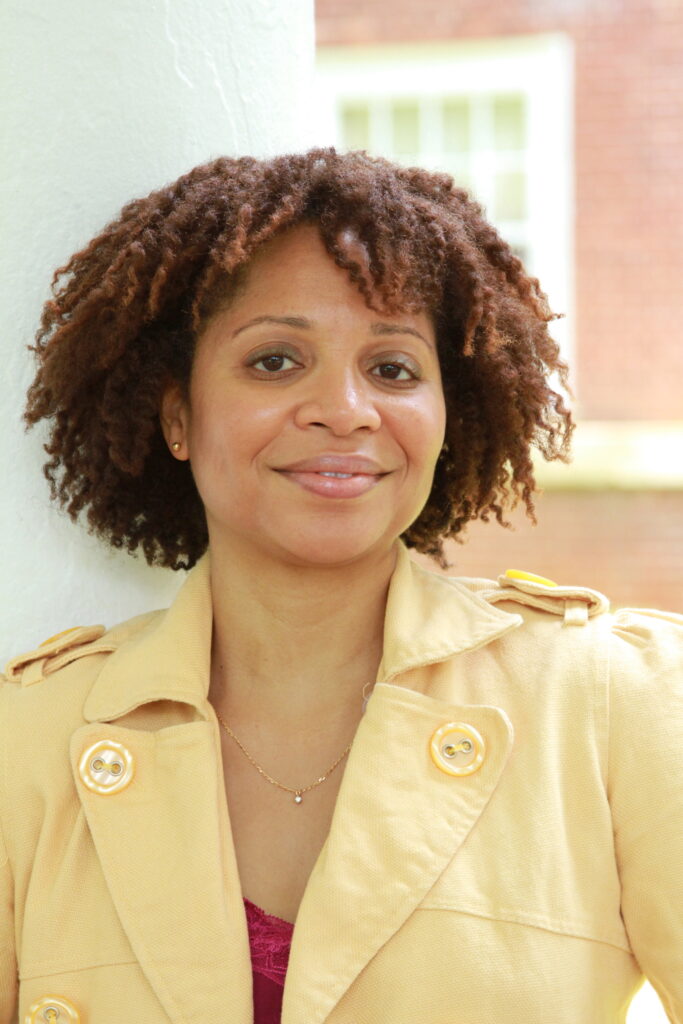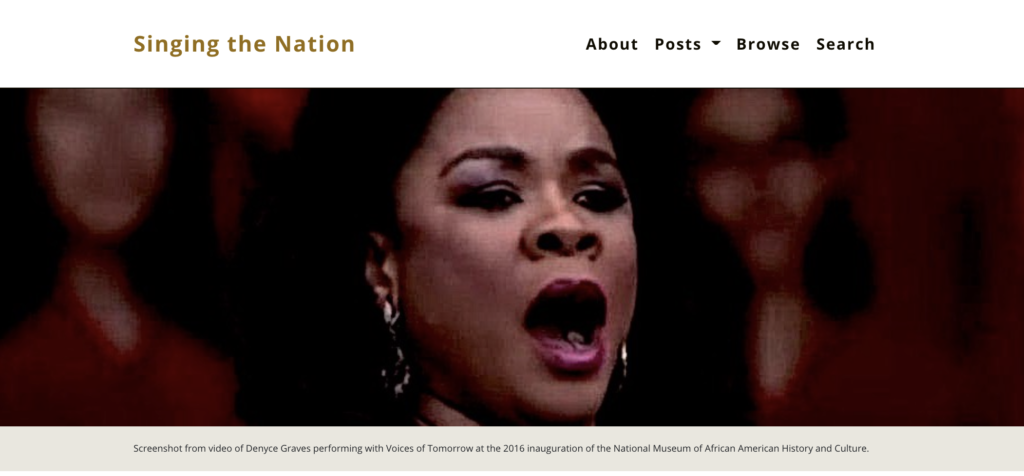Interviewed by Anna E. Kijas on March 12, 2021
Sonya Donaldson, Ph.D. is an Associate Professor of English at New Jersey City University. She is the developer of a Black digital humanities project, Singing the Nation into Being. Donaldson was the 2016 recipient of a Mellon Career Enhancement Junior Faculty Fellowship, a 2019 Virginia Humanities Fellowship, and was recently a Visiting Scholar at the University of Virginia’s Scholars Lab. She is completing work on a book manuscript, Memory, History, and the Echoes of Diaspora and is a member of the Visionary Futures Collective.
Donaldson’s interest in digital humanities stems from her work in journalism. She pursued a Ph.D. at the University of Virginia—while working as a technology editor (2000-04/2006-10) and writer (2004-2006) for Black Enterprise Magazine—moving from writing and editing pieces about technology to thinking about it pedagogically. While at UVA, Donaldson taught a technology and identities course as part of an effort to teach students about tech literacy and the ethical implications of how we use and engage with technology. This course evolved into a new one that is also the namesake of her blog, Tech & Sensibility.
The idea for her current project, Singing the Nation into Being, was inspired by a response from African-American poet and writer, Amiri Baraka, who visited UVA in 2011 as part of the Martin Luther King Jr. and Black History Month celebrations. After hearing a performance by the group Black Voices of the first verse of “Lift Every Voice and Sing,” Baraka responded that there was a lot more to that song. Donaldson started thinking about that “more.” As a Jamaican immigrant, she loves this song and how “singing this song was a way of participating in Black American life and being welcomed into a community.” She sang and heard the song at Black cultural events during her childhood, but wondered why it seemed to no longer be part of Black culture and social life, at least in her own experience. Baraka’s words and her own curiosity led her to internet searches for video performances and setting up Google alerts for new videos or mentions of this song. Donaldson soon realized that there were many recorded performances by Black people who were keeping this song alive.
One aspect that drew her in was the use of mashups, which gave people the ability to create a visual narrative while performing the song. Donaldson noted that people—complete strangers—were using similar images in their videos, including images of or related to Africa, Middle Passage, Slavery, and Barack Obama. She wondered how people were telling and making sense of the history of Africans in the Americas through this song. At this time, the project includes a sampling of about 75 videos, which Donaldson has analyzed, created brief narratives and minimal metadata about each recording. In addition, she reviewed the comments associated with the videos and thinks of “these videos as sites of memory,” and “the ephemeral archive.” Donaldson says that, “Thinking about ephemera collectively can tell us something about Black experiences, how people are articulating and understanding their relationship to Blackness, to culture, to the nation itself.” She goes on to say that “When we think about the archive and memory, I think there are ways in which the archives are constructed in a particular way that doesn’t allow for the kind of knowledge that gets circulated aurally and in an embodied form.” She believes that “A project like, Singing the Nation into Being, forces us to contend with how we formalize knowledge and value archive[s] as a particular construct. . . there’s a lot that gets left out in terms of Black histories and Black cultures.” Although ephemera may be seen as not having value beyond a specific moment in time, Donaldson sees the digital as enabling the ephemeral object, in this case the video, “to become part of a communal site of memory” that is accessible to anyone.
Working independently on this project, while teaching a full course load, as well as, at the time, directing a center and coordinating an academic program, brought to light a number of challenges of developing a digital humanities project. Donaldson looked to the minimal computing philosophy partly due to her frustration with the lack of support for Black DH scholars and digital humanities work in the academy. She chose to focus on the accessibility of the project and the people and groups she would be in conversation with—the students, community groups, cultural centers, and people who sing the song or want to teach the meaning of the song. Minimal computing was a way to bring clarity to what this project is about and encourage other people to remix the content.
When considering the historical reception of this song and how it has and continues to circulate, she points out that the composers, James Weldon Johnson and J. Rosamond Johnson, wished for the song to circulate and be passed down aurally, so in this sense, the ephemerality of these internet videos fulfills their wish. One of her biggest desires is for students to engage with this collection. Additionally, she would love to see this project at a national museum, such as the Smithsonian and thinks that it could help us get to some important conversations in the U.S.

